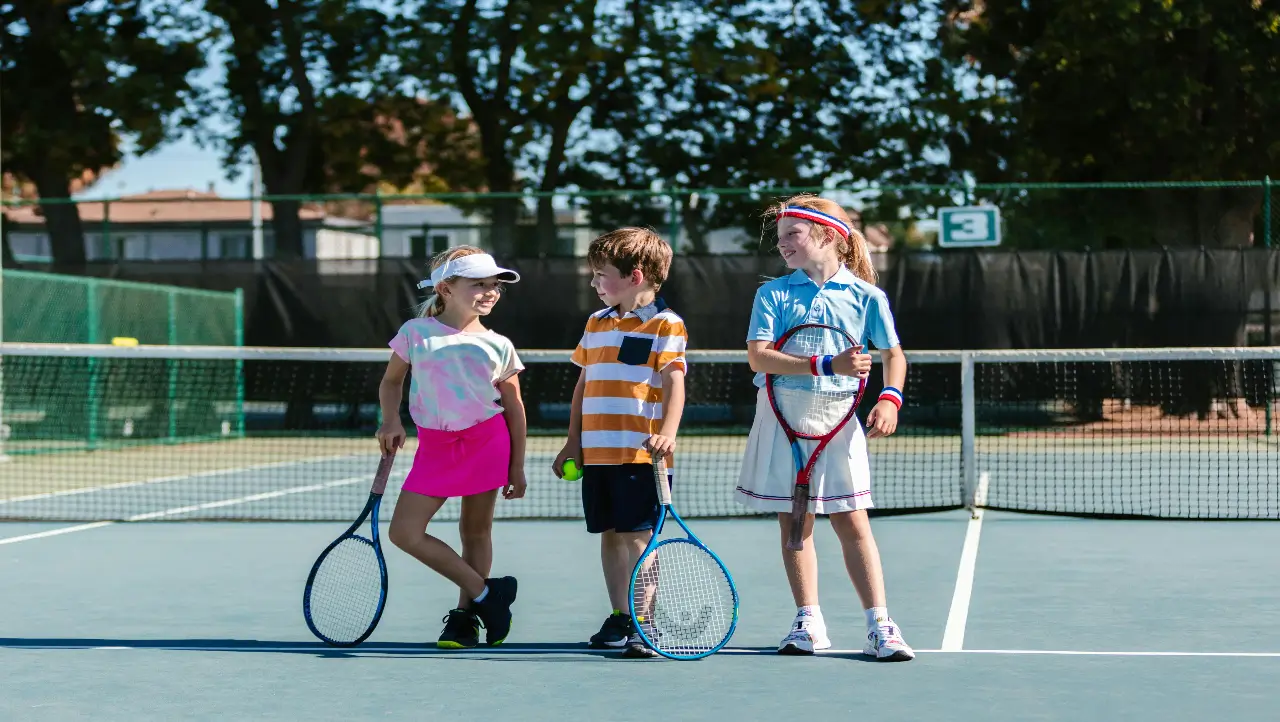Defend the Zone! Tennis Minor Game for Junior Primary | Net Court & Wall
May 4, 2024


Kas
Racquet sports are a fun way to engage students in physical activity and provide variety to their HPE program. There are so many great net-court and wall sports to play with your students and a whole host of ways you can modify them to cater to any year level or ability.
When introducing young learners to a sport like tennis, students are eager to get straight into a game. There is no issue with this as this will allow the class to clearly see the challenges they may face when trying to strike the ball or try and maintain a rally with their partner. Eventually the game will need to stop to curb student frustration and to discuss what we can do to develop our skills prior to being able to play a full game successfully.
A great way to do that is through a minor game, or modified tennis game such as ‘Defend the Zone’! This game is fantastic to slow down the game of tennis and break it into manageable components for students whilst still allowing them to play, practice their strokes and scale the activity to their level. Defend the Zone, is a great mini game to allow students to develop their fundamental skills so they can can get used to hitting the ball successfully and understanding how to hold a racquet, move into a stroke, ready positioning and also focusing on the ball prior to striking it (hand-eye coordination). Students love this game because it allows them to have a manageable goal of defending a zone using a fun tool such as a racquet!

What Do You Need?
- Court space
- Tennis courts
- Hard court area
- Racquet
- Tennis ball
- Cones/ ground markers
How Do You Play?
- Students find a partner and then proceed to collect one, ball, two cones and one tennis racquet for the pair
- Students stand back-to-back and then proceed to take 10 steps away from each other
- One student (defender) places a cone down on the ground and places another one roughly 1 meter apart creating a scoring line. This student has a racquet and tries to defend the zone by hitting the ball away with the racquet.
- The other student (attacker) has a tennis ball and has to try and bounce the ball into the scoring zone, trying to get the ball passed the defender.
- The attacker gets 5 shots at scoring before they switch positions with their partner
- The attacker cannot move closer when bouncing the ball and can not throw the ball at the defender. It has to bounce roughly in the middle of the space between both students.

What Is The Goal Of The Game?
- For students to develop a basic understanding of connecting a racquet to a tennis ball in a similar movement to a tennis stroke
- To hold a racquet effectively and strike a tennis ball
- To defend a zone/ space
How can you modify it?
Make it easier!
- Attacker stands further back from the defender
- Use a low compression tennis ball (moves slower)
- Use a balloon
- Place the cones closer together
Make it harder!
- The attacker has to hit the ball in using a racquet themselves
- Stand closer
- Make the goals wider
- No bounce is needed
What Are The Main Skills Being Utilised?
Fundamental Movement Skills -
Locomotor: Run, jump, dodge, lunge, side step, leap
Stability: Turning, balance, stopping, bending, stretching
Manipulative Skills:
- Catching
- Striking with hand
- Striking with implement
- Two-handed strike
- Overhand and underhand throw
Tactical Skills:
- Ready position to strike the ball
- Aiming for space/gaps
- Moving towards to target
- Appropriate strike for the situation

Why you need to start teaching racquet sports now!
- Physical Health Benefits: Learning racquet sports like tennis or badminton can improve primary school students’ physical health by promoting cardiovascular fitness, agility, and coordination. According to research published in the Journal of Pediatrics, children who participate in racquet sports exhibit better overall physical fitness compared to those who don’t engage in such activities (Gardner et al., 2016).
- Social Development: Racquet sports provide opportunities for primary school students to develop social skills such as communication, teamwork, and sportsmanship. Through playing doubles matches or participating in team tournaments, children learn to cooperate with others, resolve conflicts, and celebrate successes together. A study published in the European Journal of Sport Science highlights the positive impact of sports participation on social development in children, including improved peer relationships and self-esteem (Dorsch et al., 2015).
- Cognitive Benefits: Engaging in racquet sports can enhance cognitive functions such as concentration, problem-solving, and decision-making skills in primary school students. Research conducted at the University of Illinois suggests that regular physical activity, including racquet sports, is associated with improved cognitive performance and academic achievement in children (Hillman et al., 2008). By strategizing during matches and adjusting their tactics in real-time, students exercise their brains in addition to their bodies, which can positively impact their academic success.